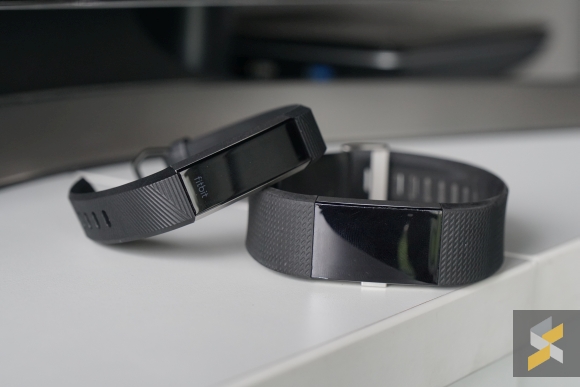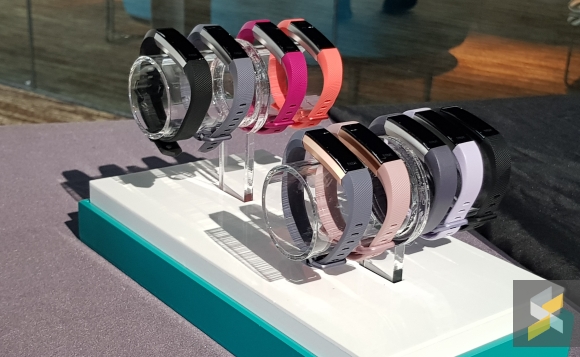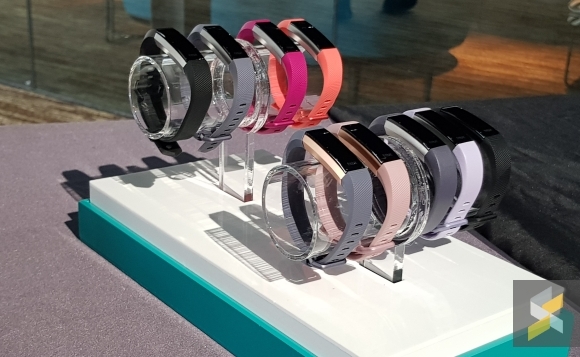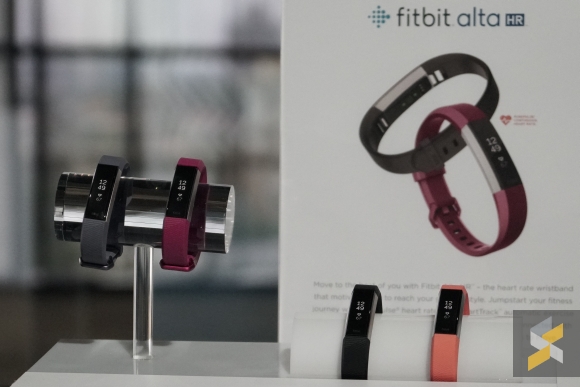To me, fitness trackers should be as discrete as possible. The more comfortable and unobtrusive it is, the more likely I will wear it. So, when Fitbit launched the brand new Alta HR today, I was definitely looking forward to seeing if it could take the place of the Charge 2 on my wrist.
Design-wise, the Fitbit Alta HR looks exactly the same as last year’s Alta. The only big difference is that it’s got a new removable railroad strap — instead of the iffy snap on one. However, the strap loop is looser than I’d like and doesn’t really stay in place very well. Fitbit has also upgraded the Alta to include a heart rate monitor — Fitbit’s PurePulse — hence the HR.
However, as far as features go, don’t think that the Alta HR will replace the Charge 2 because it’s missing quite a few key features. First off, you lose GPS tracking — yep, you don’t even get connected GPS through your phone. Next, it’s a lot more automated than the Charge 2.
You can’t start and stop workouts, you don’t have the option to set timers and you don’t even get a physical button to navigate through the menus. Instead, you have to do everything via tapping the display and hoping that the tracker will correctly (automatically) identify when you’re working out.
That said, the Alta HR does have some advantages over the Charge 2. Its size, for example, is a lot more svelte than the bulky Charge 2 and that’s a big plus in my books. It’s also IP67 water resistant — something the Charge 2 can’t achieve because of its altimeter — so you can take it into a shower and it’ll be OK. Plus, it also, according to Fitbit, has a 7-day battery life (unlike the Charge 2’s 5-day quote).

But here’s the thing — the Alta HR isn’t really designed to pull users away from the Charge 2. To me, these two devices are meant for different things. The Charge 2 is more for the active user who wants manual and multi-sport tracking while the Alta HR is more for those who just want to leave it on their wrist and forget about it — and because it’s so small you can — especially when it comes to sleep.
In fact, Fitbit also highlighted their improved sleep tracking and sleep stages feature during the Alta HR’s launch. This updated feature in the application is designed to give you more detailed information about your sleep than it previously has. Of course, since it’s an app update, this isn’t just limited to the Alta HR. Any newer Fitbit which can track heart rate will also be able to benefit from this update.
However, it is worth noting that these two devices are placed at different price points. The Alta HR is priced at RM730 which is the same price as the Charge 2 when it launched. However, the Charge 2 now is retailing for RM739 on Harvey Norman, so it’s marginally more expensive.
At the end of the day, it really depends on your needs. Personally, I’ll be giving the Alta HR an extended go because I really like its form factor. Which would you pick? Let me know in the comments below.

The Alta HR will come in four different standard colours (Black, Blue Gray, Fuchsia, Coral) and two special edition (Black Gunmetal, Rose Gold) variants that bump the price up to RM849. Classic bands are RM130 a pop, leather bands retail for RM300 each while the metal bangle will set you back RM450.
You can pick up a brand new Alta HR from 11street, Harvey Norman or other official retailers.









